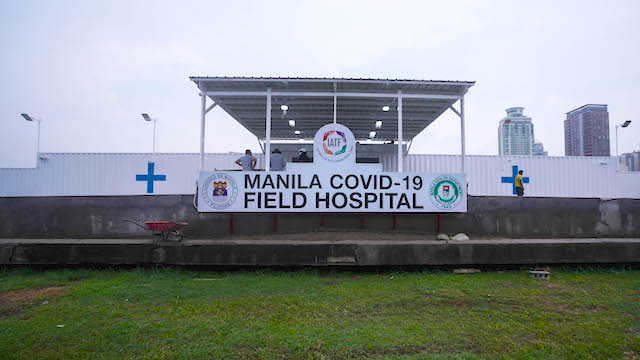
(SPOT.ph) All over Metro Manila, there are sports complexes, hospitals, and schools that have been converted to quarantine facilities. While these facilities have served many people in the past few months, (fortunately) not everybody knows what it’s really like to stay in one. Being in the know is one of our best tools during the pandemic. Here, I share my own experience of being in quarantine at one of these LGU facilities: the Manila Mega COVID-19 Field Hospital.
After a year and six months—almost to the day—of staying at home, sheltering with my family except for four times for very brief times for essential purposes, I caught COVID-19. I was running a fever in the high 30s (a hairline below 40°C, really) and felt a strange sensation in my chest. Though according to the pulse oximeter, my oxygen rate was at 98%, my pulse rate was at over 100—so much so that the oximeter would be beeping in apparent alarm. I did not feel like I had shortness of breath, but I did feel my pulse racing in my neck area and a weird feeling in my chest, very different from when I would have to catch my breath during exercise or trekking or really, other strenuous physical activity.
Also read:
What It’s Like to Spend 14 Days in Quarantine for COVID-19
Grocery-Shopping in a Pandemic: What It’s Like to Be a Quarantine Tribute
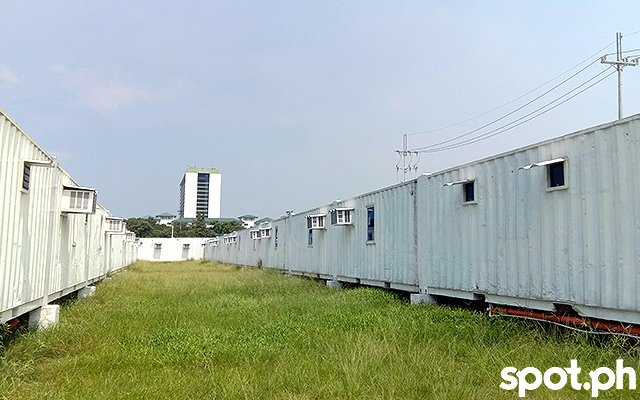
What to Do Before Quarantine
I live in the city of Manila. After my swab test returned a positive result, we advised our barangay officials over the phone. Through the call, they ascertained that we did not have a room with an attached bathroom in which I could properly isolate myself from the rest of the family, and they suggested that I be admitted at a COVID-19 Facility. Then, they sent us (via SMS) a "form" we had to accomplish, with information not only about myself but also about everyone in the household, including vaccination status. At that time, I had not yet been vaccinated because I did not fall under any of the priority groups.
Within two days, someone from the Manila Health Department called me to confirm the information we gave and to inform that an ambulance would pick me up to take me to the COVID-19 Field Hospital in Luneta that afternoon. By this time, my fever had already waned and I did not have any other symptoms aside from the weirdness in my chest—though it took much effort to walk the short flight of stairs from my room to the bathroom and back.
By SMS, the Health Department official sent me a list of things to bring to the quarantine facility:
- Comfortable clothes and underwear enough for two weeks
- Bedsheet, blanket, pillowcase and pillow
- Towel
- Bath soap
- Shampoo
- Deodorant
- Toothbrush and toothpaste
- Rolls of tissue paper
- Slippers
- Maintenance medicines (if with co-morbidities)
- Mobile phone with load
- ID card
- Philhealth ID
- Drinking water to last for 14 days
Based on my experience, I would add the following:
- Tumbler with cover
- Drinking glass with cover
- Spoon and fork
- Sponge and dishwashing liquid
- Earphones
- Socks
- Exercise clothes
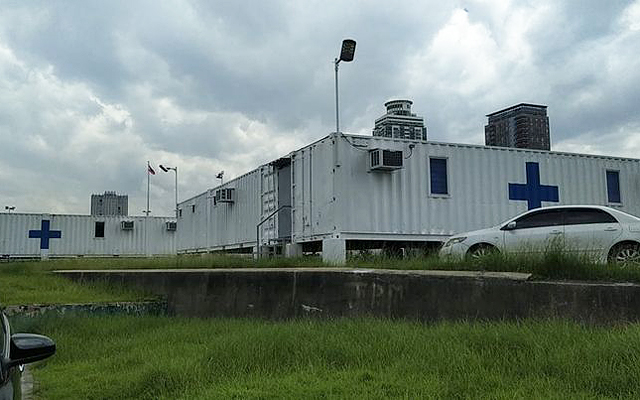
The ambulance fetched me and we proceeded to three other locations to pick up three other people with COVID-19. The four of us later arrived at the facility located between Rizal Park and Luneta Grandstand, made with shipping containers painted white sat against the green of grass and trees. A healthcare worker came with an oximeter and measured all of our pulse rates. After which, he said: "Oh, those are good rates, I like them!" Then, we exited one by one. The emergency services assistant helped me with my bag and as I followed the rest of the group, she called after me: "Pagaling ka, Ma'am, ha?"
We walked across the grass and went through an open door into what looked like a hospital ward that’s lined with beds on either side. A nurse pointed to vacant beds and we settled into them. It was extremely cold but there was WiFi, and I connected and sent messages out to my family that I had arrived safely. I joined the three o'clock prayer that they showed on TV screens suspended from the ceiling that dotted the ward.
What to Do While in a Quarantine Facility
Nurses in their PPEs walked around giving people forms to fill with information like date of swab test, symptoms, and any maintenance medicines. While waiting, I looked out as the day turned from dusk to dark. There were two large toilets and two sinks for a ward of more than 20 beds. I would later find out that there were also two shower rooms in each ward.
As part of admission procedures, everyone had to get a chest x-ray done. Then, there were interviews based on information I had written on the form for checking vital signs. Soon after, a nurse came with a wheelchair to bring me to my ward. I was thankful for this because by this time, I could not put one foot in front of the other without much effort. I was assigned to Ward 10 and settled in the much more comfortable air-conditioned ward and my assigned bed in time for dinner to be distributed. I was advised to drink a lot of water. But this, of course, led to having to go to the bathroom often. My bed was closer to the nurses' station than the bathrooms which were at the other end of the hall, right before the emergency exit door that led to the outside world. As I walked very slowly, trying to pace my breathing, I approximated 15 meters between my bed and the bathroom.
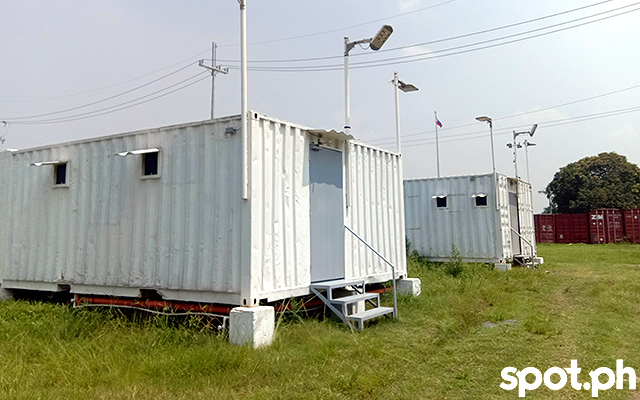
My first morning there, two people were discharged after 14 days in the facility. This gave me hope for recovery and freedom.
Our ward had good-sized windows dotting either side: one side had a direct view of the adjacent ward and the other looked out to the monument of Jose Rizal. So sunrise on non-cloudy mornings was a burst of color behind and around Rizal Park, while sunsets cast a golden glow on the hero's monument. Even closer were the statues of a tamaraw and carabao with backs turned to us. Did you know that there is a monument of the first Filipino Catholic saint in Luneta? San Lorenzo Ruiz stood almost right across from my window surrounded by a grove. It was pleasant to stand by the window in the morning as the sun streamed in with birds flying by and dragonflies buzzing around.
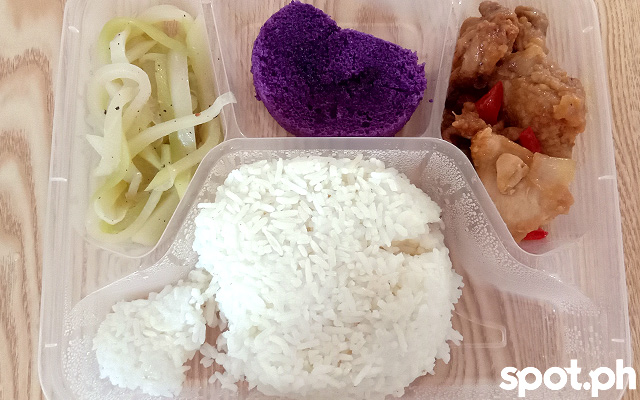
Meals were served at approximately 6:30 a.m., 11:30 a.m., and 6:30 p.m. every day. Deliveries were allowed. Yes, family members and friends could send you more drinking water, fruit, and vegetables. When I was feeling better, I regained my appetite and ordered some merienda through Foodpanda a few times. All deliveries needed to be cashless transactions so they would be hassle-free. Items delivered were accepted by guards at a desk at the front of the facility, disinfected, then brought in and distributed by nurses and other staff members between 9 a.m. and 11 a.m, 3 p.m. and 5 p.m., and 8 p.m. and 10 p.m.
On the TVs flashed announcements and reminders about things that patients needed throughout their stay as well as items that were forbidden: sharp, metal objects and electric kettles. In the morning, they would play a morning prayer, and on Sundays, Mass live at the Manila Cathedral. At 9 a.m., it was Zumba for an hour. That was followed by a morning movie; there is also an afternoon movie. There is good Internet connection too—it was only disrupted for one entire afternoon during my stay there. At that time, you can imagine how much more chatter there was!
There is a male ward and a female ward with anywhere between 20 to 30 patients each. Nurses in one station oversaw the care of one male and one female ward, including checking the patients' stats twice a day: once in the morning and again at night.
About two days before I was discharged, I found out from other patients and some nurses that our ward had all the "worst" cases in the entire facility: the ones with moderate symptoms. This meant that we needed to complete the 14 days of observation/isolation. From the very loud stories of the occupants of the beds adjacent to me (thus, the need for earphones), I surmised that most patients were fully vaccinated and had developed complications in the form of pneumonia. Our ages ranged from three to 79 years old. Some needed to be hooked up to an oxygen source; some needed the aid of wheelchairs to move between the bathroom, the shower area, and their beds.

There are many stories of hope. It was heartening for me to see how one young woman improved from being practically immobilized in bed to being able to walk to the bathroom on her own. One patient, who was on her last few days there, would help a newbie by wheeling her from her bed to the bathroom and back. One of the children in the ward with us celebrated a birthday and the nurses came in full force with balloons, singing "Happy birthday!" As for me, I went from walking very slowly the full length of 15 meters from my bed to the bathroom and having a coughing fit when I got there, to practically dancing as I walked between the two spots.
Before I left, I spied from the outside small lanterns (parols) on the windows of some of the wards. They were already decorating for Christmas. Surely a great sight for everyone who would be confined there in the months leading up to the holidays.
The night before someone is released from the facility, a nurse distributes release forms to be signed to free the city from being responsible for transporting a quarantined person home after their stay. I was overjoyed when I received my form but had to temper my reaction;a few days prior, some older women expected to leave—all their release forms had been filled up—but were delayed because their follow-up x-rays were caught in the backlog. They ended up having to stay an extra day for the radiologist to submit their results and their doctors to subsequently clear them for discharge. In some circumstances, a sputum test or follow-up x-ray is conducted.
The next day, a utility person from a contractor called Alert advised me to pack all my belongings so that he could expose them to UV light in preparation for my discharge.
But the following, he enumerated in great detail, needed to be trashed:
- Soap
- Shampoo
- Deodorant
- Toothbrush and toothpaste
- Other toiletries (e.g. lotion)
- Opened and partially consumed packages of food
Electronics and medicines, however, should be set aside and not included in the bags that would be exposed to UV light.
The following needed to be left behind at the hospital bedside table:
- Any unfinished bottles of water
- Tissue rolls
- Rubbing alcohol
- Sealed and packaged food (e.g. biscuits, crackers)
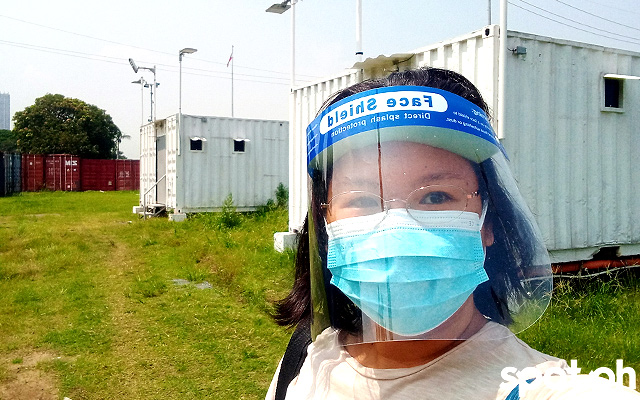
What to Do After Release From a Quarantine Facility
Just before the scheduled discharge hour (from 10 a.m. to 11 a.m.) ended, the utility person and a nurse opened the emergency exit door for me and wished me well. I walked across the grass past the other shipping-containers-turned-wards, to the driveway right outside the facility doors, where staff members asked me to sign my name on a list of those discharged for the day. They also let me know that I could request for my discharge summary and X-ray result, which would be sent to my email address within five working days. This is also where accomplished SSS sickness claims forms could be submitted for signature of the doctors during office hours.
If your barangay has a service vehicle that can fetch you,lucky you! Our barangay did not make it available to me, so I asked a friend to book my Grab vehicle home (long story short: despite much effort and a lot of stress, I still am unable to make cashless transactions work on my Grab app).
I received a certificate printed with my full name, address, and dates of stay stamped with a dry seal of the facility.
Most importantly, it states: Certification: COVID-19 survivor.
Hey, Spotters! Check us out on Viber to join our Community and subscribe to our Chatbot.
Source: Spot PH

No comments:
Post a Comment